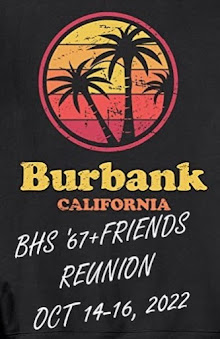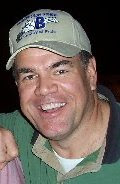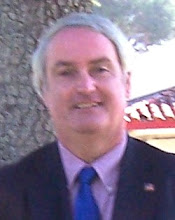Burbank at 100: From Sheep Ranch to Media Capital

Burbank in 1939. Courtesy of the 'Dick' Whittington Photography Collection, USC Libraries.
This Friday, Burbank celebrates its centennial. The city ambitiously billed as the media and entertainment capital of the world—and which, for much of its history, also served as a major hub of the aviation industry—hardly betrays today its humble origins as a dentist's sheep ranch.
The city is named after David Burbank, a New Hampshire-born dentist who came to California in a covered wagon in 1850. After the Civil War, Burbank moved to Southern California and purchased a 9,000-acre ranch that included all of the Mexican-era land grants of Rancho Providencia and Rancho Cahuenga, as well as part of Rancho San Rafael. His new fiefdom, situated at the eastern end of the San Fernando Valley, cost him only $1 per acre.
Burbank at first populated his ranch with sheep. But in 1884 a land boom, fueled by an influx of migrants from the Midwest, gripped Los Angeles County. Over the next four years, this speculative bubble would spawn more than one hundred new towns across the county, many of them in the San Fernando Valley. Burbank capitalized on the boom and in 1886 formed the Providencia Land and Water Development Company with a group of Los Angeles-based investors with the goal of subdividing and developing Burbank's sprawling sheep ranch.

Dentist David Burbank owned the sheep ranch that later became the city of Burbank. Courtesy of the Los Angeles Public Library Photograph Collection.

Drawing of Rancho Providencia, which later became Burbank, circa 1840. Courtesy of the Landcase Maps Collection, The Bancroft Library, University of California, Berkeley

Providencia Land and Water Development Company collage showing plans for the town of Burbank, circa 1886-1887. Courtesy of the Los Angeles Public Library Photograph Collection.

House of David Burbank, the city's founder, circa 1910. Dr. Burbank's homestead is now the site of the Warner Bros. Studios. Courtesy of the Title Insurance and Trust / C.C. Pierce Photography Collection, USC Libraries.
On May 1, 1887, the new town of Burbank opened with a $30,000 hotel and a one and a half mile-long, horse-powered street railway. An irrigation system transported water from nearby Toluca Lake to the fledgling community, and a depot along the Southern Pacific Railroad brought freight and new residents.
At first the town flourished, but by 1889 the land boom had turned to bust, and many of the new towns failed, but the strongest of the new communities—which included Burbank—emerged intact if hobbled. The resulting regional depression coincided with years of unusually dry weather, constraining further development of the town. Some farmers planted vineyards and drought-resistant crops and thrived, but for years Burbank's growth would not exceed what its natural resources could sustain.

View southeast down Olive Avenue, circa 1887, showing the fledgling town of Burbank in the distance. Streetcar tracks run down the middle of the road. Courtesy of the Title Insurance and Trust / C.C. Pierce Photography Collection, USC Libraries.

Olive Avenue in Burbank, circa 1889. Courtesy of the Title Insurance and Trust / C.C. Pierce Photography Collection, USC Libraries.

San Fernando Boulevard at Olive Avenue, circa 1910. Courtesy of the Title Insurance and Trust / C.C. Pierce Photography Collection, USC Libraries.
That changed late in the first decade of the twentieth century, when two developments resurrected the Valley land boom.
First, 1905 brought plans for a massive and controversial water project. The Los Angeles Aqueduct would transport snowmelt from the Sierra Nevada's eastern slope out of the Owens Valley, across the Mojave Desert, over the San Gabriel Mountains, and into the San Fernando Valley, essentially watering one valley at the expense of another.
Construction began in 1909 and in 1913 water once bound for Owens Lake flowed into the San Fernando Valley and through the taps of Burbank homes and businesses.
Second, Southern California's interurban rail network, the Pacific Electric Railway, began to expand into the San Fernando Valley and connect the mostly-undeveloped plain with downtown Los Angeles and other regional population centers.
With a modest population, Burbank residents had some trouble convincing the Pacific Electric to bring its streetcars to the town. The railway only agreed to extend its Glendale-Los Angeles line into Burbank after extracting a subsidy of $48,000 from residents.
Like the aqueduct, the arrival of the Pacific Electric was not without controversy. Burbank resident J.W. Fawkes had patented the nation's first monorail, a suspended car that he dubbed the Aerial Swallow. Fawkes built a prototype along a short segment of Olive Avenue and planned, after securing the right-of-way, to extend the line to Glendale. He urged his fellow residents to reject the Pacific Electric's demands and instead adopt his own experimental concept. In the end, Burbank chose the Pacific Electric's more conventional option. The Aerial Swallow became known as "Fawkes' Folly," and the first Pacific Electric streetcar from Los Angeles rolled into Burbank on September 6, 1911.

'Fawkes' Folly,' an experimental monorail that operated briefly in Burbank in 1911. Courtesy of the Title Insurance and Trust / C.C. Pierce Photography Collection, USC Libraries.

The first electric streetcar arrived in Burbank in 1911. Courtesy of the Los Angeles Public Library Photograph Collection.

The last Pacific Electric car to service Burbank arrived in 1955. Photo by Alan K. Weeks, courtesy of the Metro Transportation Library and Archive. Used under a Creative Commons license.
With much of the now rapidly-developing Valley being swallowed up by the City of Los Angeles, residents of Burbank petitioned the state legislature to allow the town to incorporate as its own city. On July 8, 1911, the City of Burbank came into being.
In the succeeding years, independent Burbank became a major center for two industries that would dominate Southern California.

First National Studios in Burbank, circa 1927-1931. The studio facility is today the home to Warner Bros. Pictures. Courtesy of the California Historical Society Collection, USC Libraries.

NBC television studios in Burbank, 1952. Since NBC's corporate merger with Universal, the network has announced a relocation of its production facilities to nearby Universal City. Courtesy of the Los Angeles Examiner Collection, USC Libraries.
The filmed entertainment business, nominally headquartered in Hollywood, came to Burbank in the 1920s when First National Pictures built a film studio on Olive Avenue. Following the success of First National's 1929 talkie film, The Jazz Singer, Warner Brothers Pictures acquired the studio and moved from its Hollywood home to the Burbank lot. Other production companies would soon follow: Columbia Pictures purchased land in the city for use as a backlot and, in 1939, Walt Disney Productions moved into its new home on Buena Vista Street. (Next year, KCET will follow in their footsteps when it moves into its new Burbank facility.)

Lockheed assembly plant in Burbank, circa 1940. Courtesy of the Los Angeles Area Chamber of Commerce Collection, USC Libraries.

Burbank's Union Air Terminal, circa 1934-1940. Lockheed owned and operated the airport from 1940 to 1978, when it sold it to the cities of Burbank, Glendale, and Pasadena. Today it is named Bob Hope Airport. Courtesy of the Werner Von Boltenstern Postcard Collection, Department of Archives and Special Collections, Loyola Marymount University Library.
In 1928, another transplant from Hollywood, the Lockheed Aircraft Company, settled down in Burbank. An early leader in the fledgling aviation industry, Lockheed became a crucial supplier of Allied warplanes during World War II—and a major attractor of new workers and residents.
As Burbank celebrates its 100th birthday, you can learn more about the city's history with the help of L.A. as Subject members and other institutions. Explore the San Fernando Valley History Digital Library, maintained by CSUN's Oviatt Library, for archived images from Burbank's past, or visit the Burbank Central Library from August 1 through October 14 for its "Snapshots of Burbank" photo exhibit.
SOURCE: http://www.kcet.org/updaily/socal_focus/history/la-as-subject/burbank-at-100-from-sheep-ranch-to-media-capital-34994.html










No comments:
Post a Comment